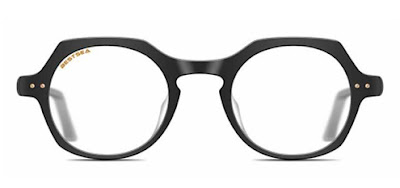Factors affecting the thickness of myopia eyewear
Many people with myopia want to wear a pair of light and thin eyewear. The eyewear are often worn on the face. If they are heavy, they will be very uncomfortable. So how can I choose a pair of light and thin eyewear: This article mainly summarizes several factors that affect the thickness of myopia eyewear.
1. The size of the eyewear frame. Assuming a customer's interpupillary distance is 60, if the interpupillary distance of the frame (that is, the distance between the geometric centers of the lenses) is 70, divided by 2 means that the center point should be moved by 5 mm. The amount of shift is the real essential factor that determines the thickness. Myopia is thin in the center and thick at the edges. So the thicker the edge becomes. In theory, the closer your interpupillary distance is to the interpupillary distance of the frame, the better. For example, if the interpupillary distance of an spectacle frame is 70 and 68, the shift is only 1mm, while the shift is 6mm for the 58 interpupillary. When other factors remain unchanged, the natural interpupillary distance is small and the natural interpupillary distance is thick.
2. The degree of eyewear. Everyone understands this, because in the case of the same material and parameters of the lens, the higher the degree, the thicker the lens, and of course the heavier it is on the eyewear frame.
3. Refractive index. Generally, the refractive index is divided into 1.56, 1.60, 1.67, and 1.74. The larger the number, the thinner the lens has the same degree of roughness. Of course, the price is different. The higher the refractive index of the same brand and the same material, the more expensive the price is generally.
4. Frame material. The frame material is also one of the most important factors affecting the thickness of the frame. acetate eyewear frames are generally thicker and heavier, and metal materials are generally thinner, especially titanium eryewear. Because titanium materials are extremely strong and tough, they can be made light and slick. Of course, when matching lenses, you cannot completely see the material of the frame, but also whether it is suitable for the thickness of the lens. For example, if you have a high degree and have to choose a relatively thicker height lens, otherwise it will look very uncoordinated.
 |
| acetate optical frames |
 |
| titanium eyewear |
5. The round frame looks thinner than the square one. The round shape is not like a square with four corners. After the lens is installed, the surroundings look more uniform and visually appear thinner.
6. The size of the lens. If the size of the frame and the interpupillary distance are the same, the lens is also small and looks thinner. Conversely, if you choose a larger frame, the edge of the lens will be thicker, which will also make the eyewear look thicker.
7. The thickness of the center of the lens: The thickness of the center should not be less than 1.0 mm for safety. If one eyewear manufacturer is 1.1 and the other is 1.2, the actual thickness of different lenses will be different.
In addition, if you feel that the edge of the lens is too thick when you wear myopia, you can also ask the processing master to make the V-shaped edge of the lens a little bit thinner. Of course, if the sides are too oblique, there will be too much whiteness from the front, which will also affect the appearance, it depends on how you choose.




Comments
Post a Comment